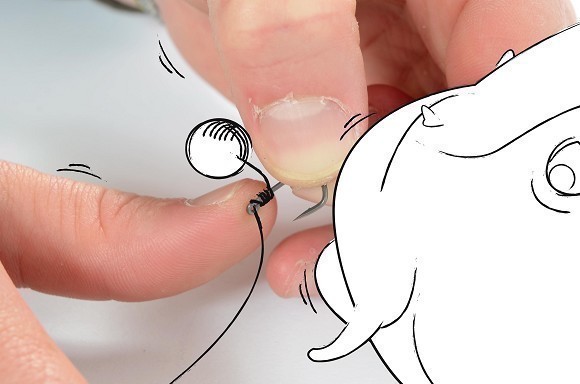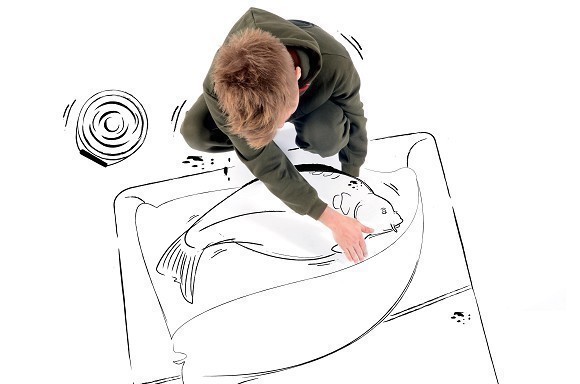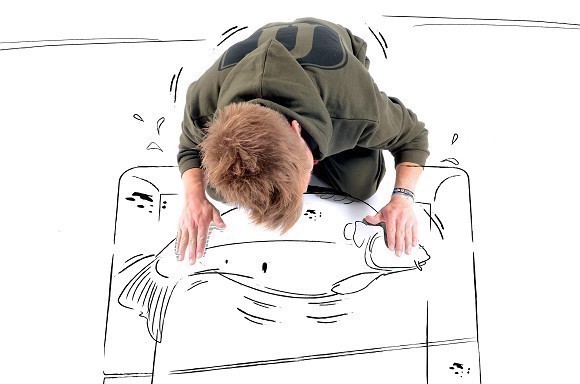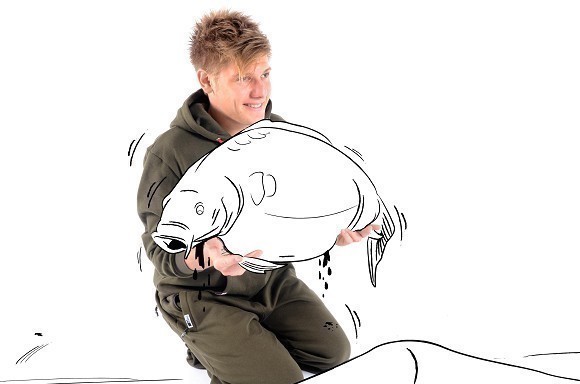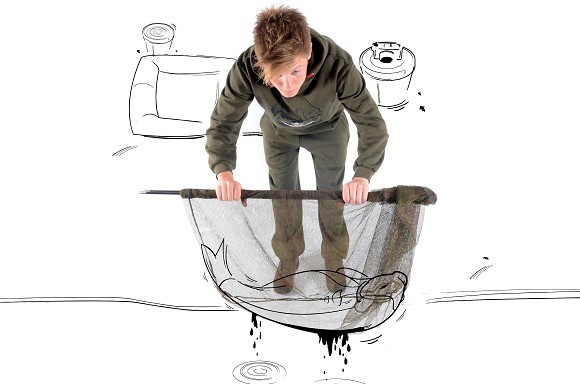
5 steps to improving your carp care
Looking after your catch is the most important moral in fishing. We've put together this all-in-one carp care guide to highlight the correct way to treat your catch.
1 Remove a fish from the lake
The key here is preparation! Always carry a spare bankstick that is positioned in a convenient part of the swim you’re fishing in order to safely hold the net in place, with your fish inside, whilst you prepare the all-important utensils needed to look after our water dwelling friends whilst they’re on the bank.
Get wet
Dampen your hands and wet both the unhooking mat and weigh sling with lake water. This ensures that the protective slimy membrane on the carps skin doesn’t dry up which could cause damage and scarring to your capture.
Location, location
Position mat in an appropriate place with the backdrop you desire for your photographs. It’s worth positioning the mat slightly away from your gear with a backdrop of foliage or the water in which your catch resides.
Camera and scales
Get the camera out of its case and in position to shoot. Also zero the scales with your wet sling so that the recorded weight is accurate.
Remove and roll
Detach the net from its handle and roll net towards the carp. This will support the carp as you lift it from the water and allow you to have complete control of the lift.
Bring ashore
Ensure ALL of fish’s fins are folded flat against its body and then lift Mr. Carp (or Mrs.) from the water’s edge, being cautious not to bump the carp on any obstacles and gently lower the fish onto your well-padded mat.
2 Unhooking a carp
All too often on pressured waters, carp turn up on the bank with battered mouths. This is primarily down to poor unhooking skills employed by anglers. Obviously it is important to play the fish correctly too. Fish safety and looking after the fish we catch in the right manner should be the most important skill to be learnt in fishing. It also goes without saying that each hook hold should be treated with some form of carp care product.
Get a grip
It’s important to grip the hook correctly when removing it from a fish’s mouth. You need to hold the hook at two points, apply steady thumb pressure against the eye of the hook and use your index finger to prevent the hook from moving around.
Push down
Once you’ve got to grips with the hook, apply the thumb pressure to the eye of the hook whilst pushing down the shank in the opposite direction to the point of penetration.
Use forceps
Some hook holds are easier to remove than others. If you’re really struggling to unhook the fish, then use a pair of forceps by clamping down on the shank applying steady downward pressure.
Snip, snip
If you find yourself in the unfortunate position where the hook point has gone in and come back out of the flesh, instead of passing it back through, which could cause significant damage to the fish’s mouth, simply snip the point and barb off the hook and pass it back through.
3 Transferring a carp from the mat to a weigh sling
You’ve caught a cracking fish, the photos have been taken, it’s now time to get those all-important figures and find out just how much she weighs. Again, from a fish safety aspect it’s essential to get this right so the fish can return to the water without damage and minimal stress.
Wet, wet, wet
Ensure your sling is wet before attempting to place a carp into it. If the sling mesh is dry then this can cause the protective slimy membrane that covers the fish’s body to dry out and may result in damage or scarring to the carp’s skin.
Place and lift
Lay the wet sling open on the mat and lift the fish onto the sling in an upright position. This is better than laying the fish on its side as the movement of lifting the fish up on its side whilst weighing could cause fin damage.
Fin perfect
Before you zip up the sling and lift the fish onto the scales, check that all the fins are flat to the fish’s body. If they are not this will cause unnecessary stress to the fish and potentially damage its fins.
Zip and lift
Once all the previous steps have been carried out, zip-up the weigh sling to ensure the fish cannot fall out when lifted, then attach the scales to the sling handle and lift your prize, not moving the fish away from the mat, in order to see those pounds and ounces!
4 Controlling a carp on the mat
Every now and then we catch a real lively one that continues its fight on the bank. Some fish go berserk on the mat and it’s essential that we own the knowledge and ability to calm them down and stop the fish causing itself harm whilst in captivity.
Get over it
The very first action to take if our carpy friend gets a bit excited on the mat is to get your body over the frantically flapping critter and hold the carp in position so it’s not left flapping around of its own accord. This will reduce the light on the fish as your body will shadow any sunlight that is present and you will be able to take full control of the fish so that it cannot injure itself or slide off the mat.
Block the light
If the fish is still giving you the run around, cover its head with a wet sling. This will relax the fish, as the mesh will block
all the light.
Hot potato
If your catch decides to give you a tail slap whilst your holding it for a photograph, then bring the fish close to your body and lower the carp gently onto the mat until the fish behaves. When holding a fish you can tell when it’s going to flick its tail or have a wriggle, as the fish will tense up just before. When you feel the fish tense, lower it onto the mat until normal order is restored.
5 How to hold a carp
This may seem like a no brainer for many, however, we still see people in photographs or on the bank almost cuddling their catch rather than holding it correctly. It is paramount to hold a carp in the right manner for two reasons. Firstly it will be a more comfortable experience for the fish and secondly, your photos will look great.
Keep low
Make sure you are in a crouched or kneeling position when holding the fish at all times, and always hold the fish over the mat, in case for any reason the fish should begin to flap and force you to lose grip.
Fingers and fins
To hold a carp correctly, one hand must be placed with your fingers gripping either side of the pectoral fin and the other hand should repeat the process on the carp’s anal fin.
Close to your body
Never hold a fish too far away from your body, as you will find it difficult to safely control the fish should it start to flap around. Always stick to tucking your elbows and upper arms parallel to your body with your forearms at a right-angle, this is the safest and best way to hold a carp.





